The Effect of Diagenetic Minerals on the Petrophysical Properties of Sandstone Reservoir: A Case Study of the Upper Shallow Marine Sandstones in the Central Bredasdorp Basin, Offshore South Africa
Abstract
:1. Introduction
2. Location of the Study Area and the Geological Background
3. Materials and Methods
3.1. Petrophysical Evaluation
3.1.1. Volume of Clay Determination
3.1.2. Wireline Log and Core-Derived Porosity Determination
3.1.3. Water Saturation Determination
3.1.4. Permeability Determination
3.2. Core Description
3.3. Mineralogy Analyses
4. Results
4.1. Relationship between Core Porosity and Core Permeability
4.2. Petrophysical Analysis
4.2.1. Well ZN1 Interpretation
4.2.2. Well ZN3 Interpretation
4.2.3. Well ZN4 Interpretation
4.3. Mineralogical Analyses
4.3.1. Detrital Minerals
4.3.2. Diagenetic Minerals
4.4. Clay Mineral Cementation
Smectite and Illite Clays
4.5. Cement of Sandstone
5. Discussion
6. Conclusions
Author Contributions
Funding
Data Availability Statement
Acknowledgments
Conflicts of Interest
References
- Dutton, S.P.; Loucks, R.G. Diagenetic controls on evolution of porosity and permeability in lower Tertiary Wilcox sandstones from shallow to ultradeep (200–6700 m) burial, Gulf of Mexico Basin, USA. Mar. Pet. Geol. 2010, 27, 69–81. [Google Scholar] [CrossRef]
- Gier, S.; Worden, R.H.; Johns, W.D.; Kurzweil, H. Diagenesis and reservoir quality of Miocene sandstones in the Vienna Basin, Austria. Mar. Pet. Geol. 2008, 25, 681–695. [Google Scholar] [CrossRef]
- Stein, J.; Craw, D.; Pope, J. Initial sedimentation and subsequent diagenesis in the Eastern Southland Lignite Basin, southern New Zealand. N. Z. J. Geol. Geophys. 2011, 54, 167–180. [Google Scholar] [CrossRef]
- Wan, Q.; Fan, A.P.; Yang, R.C.; Lenhardt, N. Diagenetic mineralogy and its effect on the reservoir properties of the sandstones of the Permian of S120 block (Sulige gas field), Ordos Basin, NW China. J. Palaeogeogr. 2022, 11, 360–386. [Google Scholar] [CrossRef]
- Bjorlykke, K. Diagenesis. In Development in Sedimentology; Chilingarian, G.V., Wolf, K.H., Eds.; Elsevier: Amsterdam, The Netherlands, 1988; Volume 41, pp. 555–588. [Google Scholar]
- Risha, M.; Tsegab, H.; Rahmani, O.; Douraghi, J. The Impact of Clay Minerals on the Porosity Distribution of Clastic Reservoirs: A Case Study from the Labuan Island, Malaysia. Appl. Sci. 2023, 13, 3427. [Google Scholar] [CrossRef]
- Lundergard, P.D. Sandstone porosity loss; A “big picture” view of the importance of compaction. J. Sediment. Res. 1992, 62, 250–260. [Google Scholar] [CrossRef]
- Baiyegunhi, T.L.; Liu, K.; Gwavava, O.; Baiyegunhi, C. Impact of Diagenesis on the Reservoir Properties of the Cretaceous Sandstones in the Southern Bredasdorp Basin, Offshore South Africa. Minerals 2020, 10, 757. [Google Scholar] [CrossRef]
- Benson, D.I. Porosity reduction through ductile grain deformation: An experimental assessment. GCAGS 1981, 31, 235–237. [Google Scholar]
- Pittman, E.D.; Larese, R.E. The importance of ductile deformation of lithic fragments in arenites: Evidence from experimental compaction. In Proceedings of the Abstracts of the 12th International Sedimentology Conference, Canberra, Australia, 24–30 August 1986; p. 243. [Google Scholar]
- Kurkjy, K.A.; Smith, J.C.; Trevena, A.S. Losses of permeability and porosity in lithic sands assessed with compaction experiments. Am. Assoc. Pet. Geol. Bull. 1987, 71, 579. [Google Scholar]
- Worden, R.H.; Burley, S.D. Sandstone diagenesis from sand to stone. In Sandstone Diagenesis: Recent and Ancient; Burley, S.D., Worden, R.H., Eds.; International Association of Sedimentologists: Gent, Belgium, 2003; Volume 4, pp. 3–44. [Google Scholar] [CrossRef]
- Sun, X.L.; Lin, C.Y.; Zhang, X.G.; Lin, J.L.; Zhao, Z.X.; Huang, D.W.; Duan, D.P. Characteristics and distribution of clay minerals and their effects on reservoir quality: Huagang Formation in the Xihu Sag, East China Sea Basin. Aust. J. Earth Sci. 2019, 66, 1163–1174. [Google Scholar] [CrossRef]
- Feng, W.; Rong, C.; Jingchun, T. Diagenesis and diagenetic facies of the Chang 4+ 5 tight sandstone reservoirs in Longdong area, Ordos Basin. Oil Gas Geol. 2014, 35, 199–206. [Google Scholar]
- Thomas, W.H.; Ringen, J.K.; Rasch, S.O. Effect of glauconite on petrophysical properties as revealed by core analysis. In Proceedings of the International Symposium of the Society of Core Analysts, Pau, France, 21–24 September 2003. [Google Scholar]
- Opuwari, M.; Ubong, M.O.; Jamjam, S.; Magoba, M. The Impact of Detrital Minerals on Reservoir Flow Zones in the Northeastern Bredasdorp Basin, South Africa, Using Core Data. Minerals 2022, 12, 1009. [Google Scholar] [CrossRef]
- Opuwari, M.; Magoba, M.; Dominick, N.; Waldmann, N. Delineation of sandstone reservoir flow zones in the central Bredasdorp basin, South Africa, using core samples. Nat. Resour. Res. 2021, 30, 3385–3406. [Google Scholar] [CrossRef]
- Akhir, N.A.M.; Gaafar, G.R.; Saaid, I.M. Quantification of Clay Mineral and Log Response Toward Reservoir Rock Properties. In ICIPEG 2014: Proceedings of the International Conference on Integrated Petroleum Engineering and Geosciences; Springer: Singapore, 2015; pp. 221–231. [Google Scholar]
- Petroleum Agency of South Africa. Petroleum Exploration Information and Opportunities; Petroleum Agency SA Brochure; Petroleum Agency of South Africa: Cape Town, South Africa, 2004; p. 16. [Google Scholar]
- Baiyegunhi, T.L.; Liu, K.; Gwavava, O.; Baiyegunhi, C. Classification and Diagenetic Characteristics of the Cretaceous Sandstones in the Southern Bredasdorp Basin, Offshore South Africa. Acta Geol. Sin. Engl. Ed. 2021, 95, 1695–1713. [Google Scholar] [CrossRef]
- Masindi, R.; Trivedi, K.B.; Opuwari, M. An integrated approach of reservoir characterization of Y gas field in Central Bredasdorp Basin, South Africa. J. Pet. Explor. Prod. Technol. 2022, 12, 2361–2379. [Google Scholar] [CrossRef]
- McMillan, I.K.; Brink, G.J.; Broad, D.S.; Maier, J.J. Late Mesozoic sedimentary basins off The South Coast of South Africa. In Sedimentary Basins of the World; Elsevier: Amsterdam, The Netherlands, 1997; Volume 3, pp. 319–376. [Google Scholar] [CrossRef]
- Du Toit, S.R. The Mesozoic history of the Agulhas Bank in terms of the plate tectonic theory. Geokongress 77. GSSA 1979, 6, 197–203. [Google Scholar]
- Leith, M.J.; Rowsel, D.M. Burial history and temperature-depth conditions for hydrocarbon generation and migration on the Agulhas Bank, South Africa. Geokongress. GSSA 1979, 6, 205–217. [Google Scholar]
- McLachlan, I.R.; Brenner, P.W.; McMillan, I.K. The stratigraphy and micropaleontology of the Cretaceous Benton Formation and the PB-A/1 well, near Knysna. Cape Province Trans. GSSA Abstr. 1976, 79, 60–63. [Google Scholar]
- Dingle, R.V.; Siesser, W.G.; Newton, A.R. Mesozoic and Tertiary Geology of Southern Africa. In A Global Approach to Geology; Taylor and Francis: Milton Park, UK, 1983. [Google Scholar]
- Mudaly, K.; Turner, J.; Escorcia, F.; Higgs, R. F-O gas field, Offshore South Africa—From Integrated approach to field development. In Proceedings of the AAPG Annual Conference and Exhibition, Cape Town, South Africa, 26–29 October 2009. [Google Scholar]
- Higgs, R. Cretaceous ‘USM’ Reservoir, FO Gas Field, Offshore South Africa: Sedimentological factors affecting economic viability. In Proceedings of the AAPG International Conference and Exhibition, Cape Town, South Africa, 26–29 October 2008. [Google Scholar]
- Roux, J. Potential outlined in southern Outeniqua Basin off S. Africa. Oil Gas J. 1997, 95. Available online: https://www.ogj.com/home/article/17242138/potential-outlined-in-southern-outeniqua-basin-off-s-africa (accessed on 15 January 2024).
- Crain Petrophysical Handbook. Available online: www.spec2000.net/14-swbasics.htm (accessed on 5 June 2019).
- Simandoux, P. Dielectric measurements on porous media, application to the measurements of water saturation: The study of the behaviour of argillaceous formations. Rev. L’institut Fr. Pet. 1963, 18, 93–215. [Google Scholar]
- Poupon, A.; Leveaux, J. Evaluation of water saturation in shaly formations. In SPWLA Annual Logging Symposium; SPWLA: Houston, TX, USA, 1971; p. 2. [Google Scholar]
- Magoba, M.; Opuwari, M. Petrophysical interpretation and fluid substitution modelling of the upper shallow marine sandstone reservoirs in the Bredasdorp Basin, offshore South Africa. J. Pet. Exp. Pro. Tec. 2019, 10, 783–803. [Google Scholar] [CrossRef]
- Glover, P.; Petrophysics, M. Course Notes; University of the Aberdeen: Aberdeen, UK, 2009. [Google Scholar]
- Wilkinson, M. The concretions of the Bearreraig Sandstone Formation. Geometry and geochemistry. Sedimentology 1991, 38, 899–912. [Google Scholar] [CrossRef]
- Hendry, J.P.; Trewin, N.H.; Fallick, A.E. Low-Mg calcite marine cement in Cretaceous turbidites. origin, spatial distribution and relationship to seawater chemistry. Sedimentology 1996, 43, 877–900. [Google Scholar] [CrossRef]
- Hein, J.R.; O’neil, J.R.; Jones, M.G. Origin of authigenic carbonates in sediment from the deep Bering Sea. Sedimentology 1979, 26, 681–705. [Google Scholar] [CrossRef]
- Everett, B.; Holgate, D.; Everett, J.; Rops, E. The Log-Derived SW Compared to Surface Measurement of Core SW: How they are Reconciled. In Proceedings of the SPWLA 61st Annual Logging Symposium, Online, 26 June–29 July 2020; OnePetro: Richardson, TX, USA, 2020. [Google Scholar]



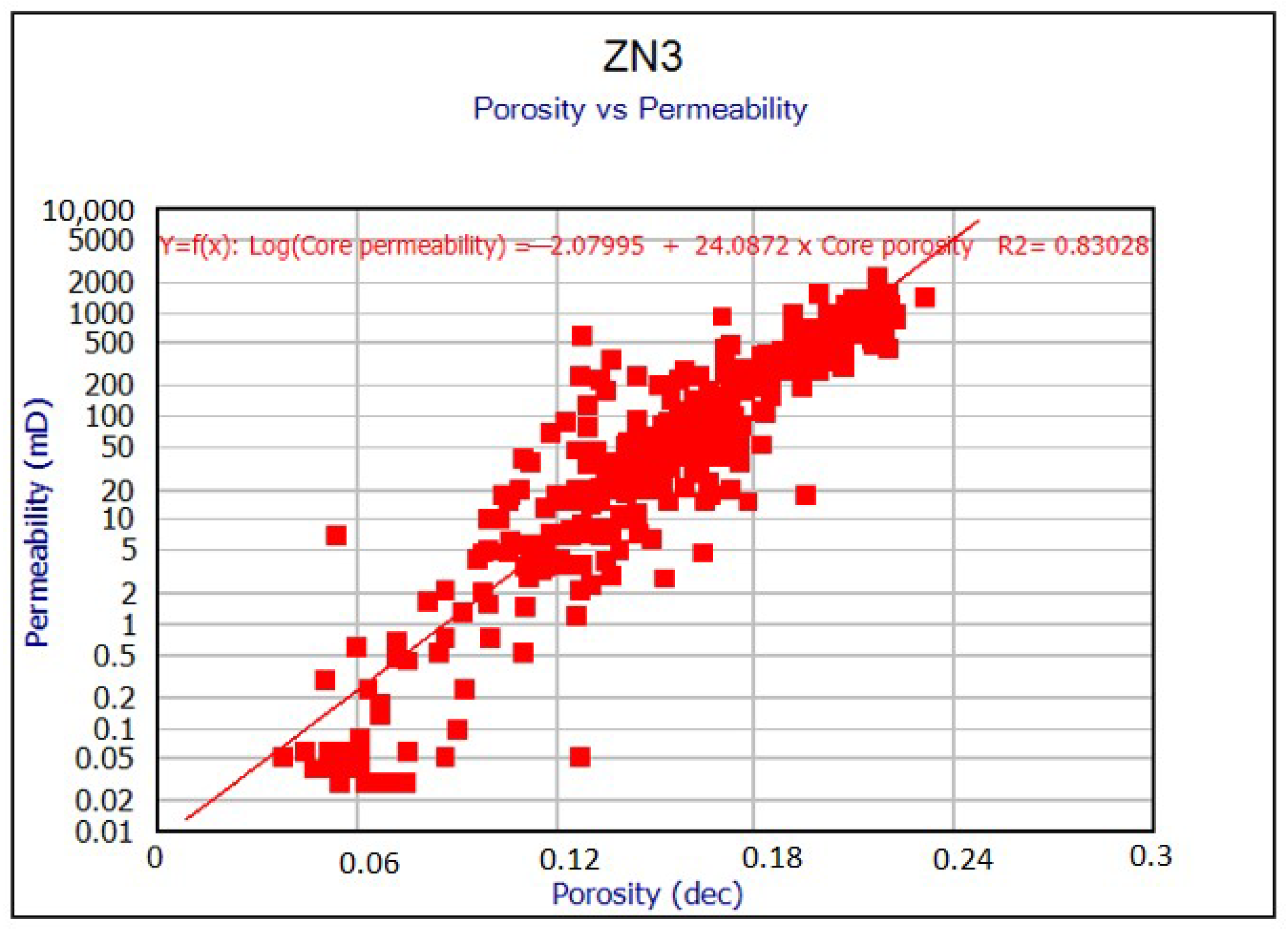

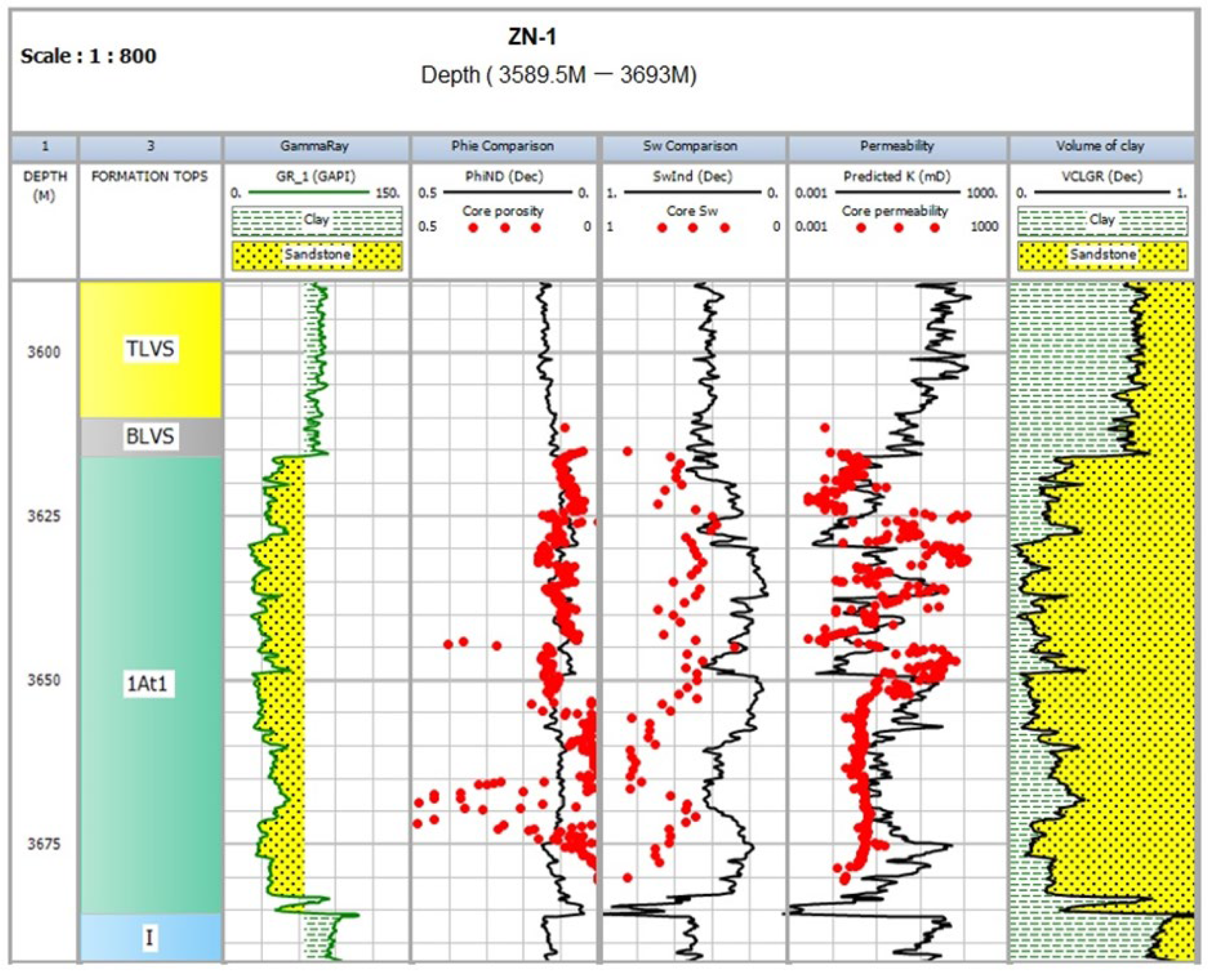
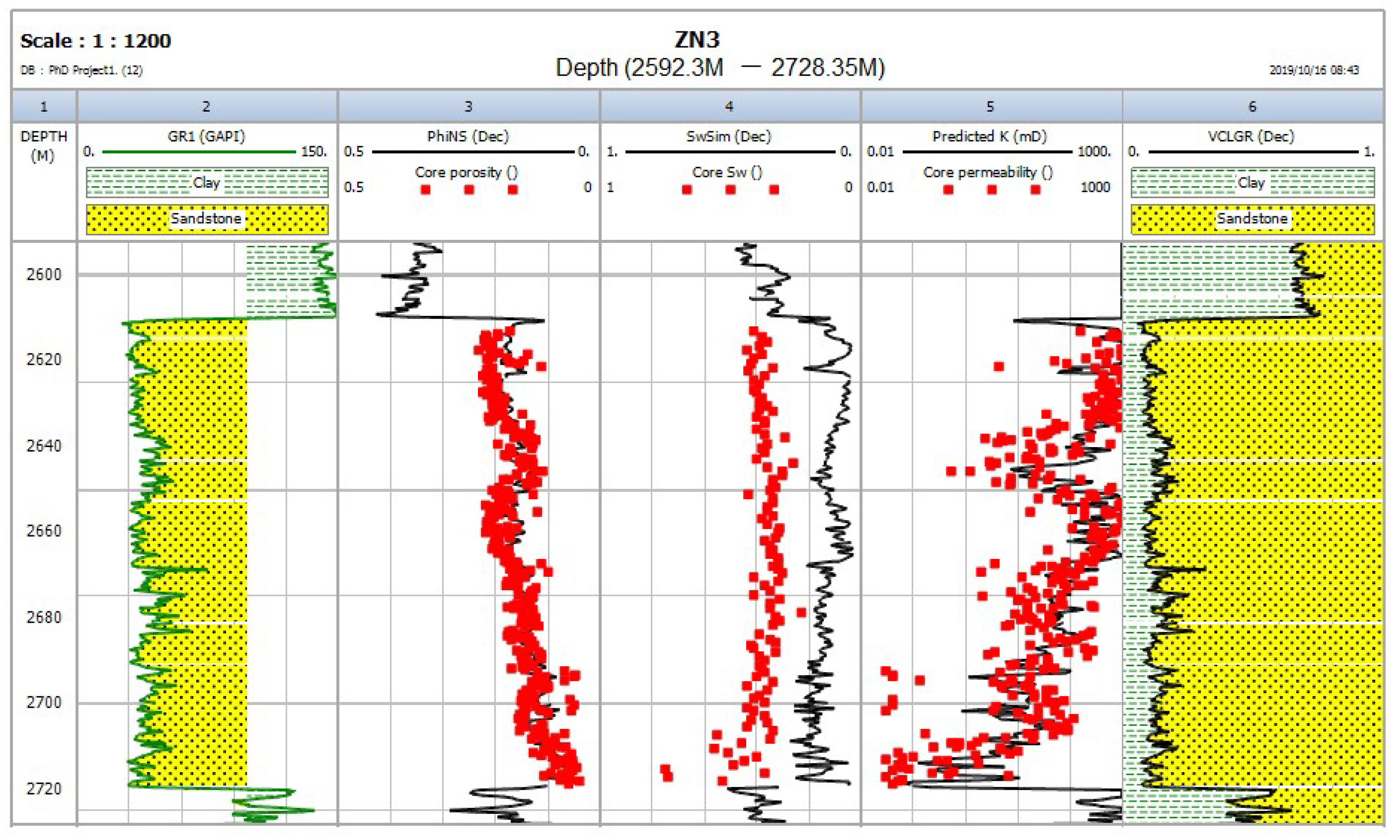
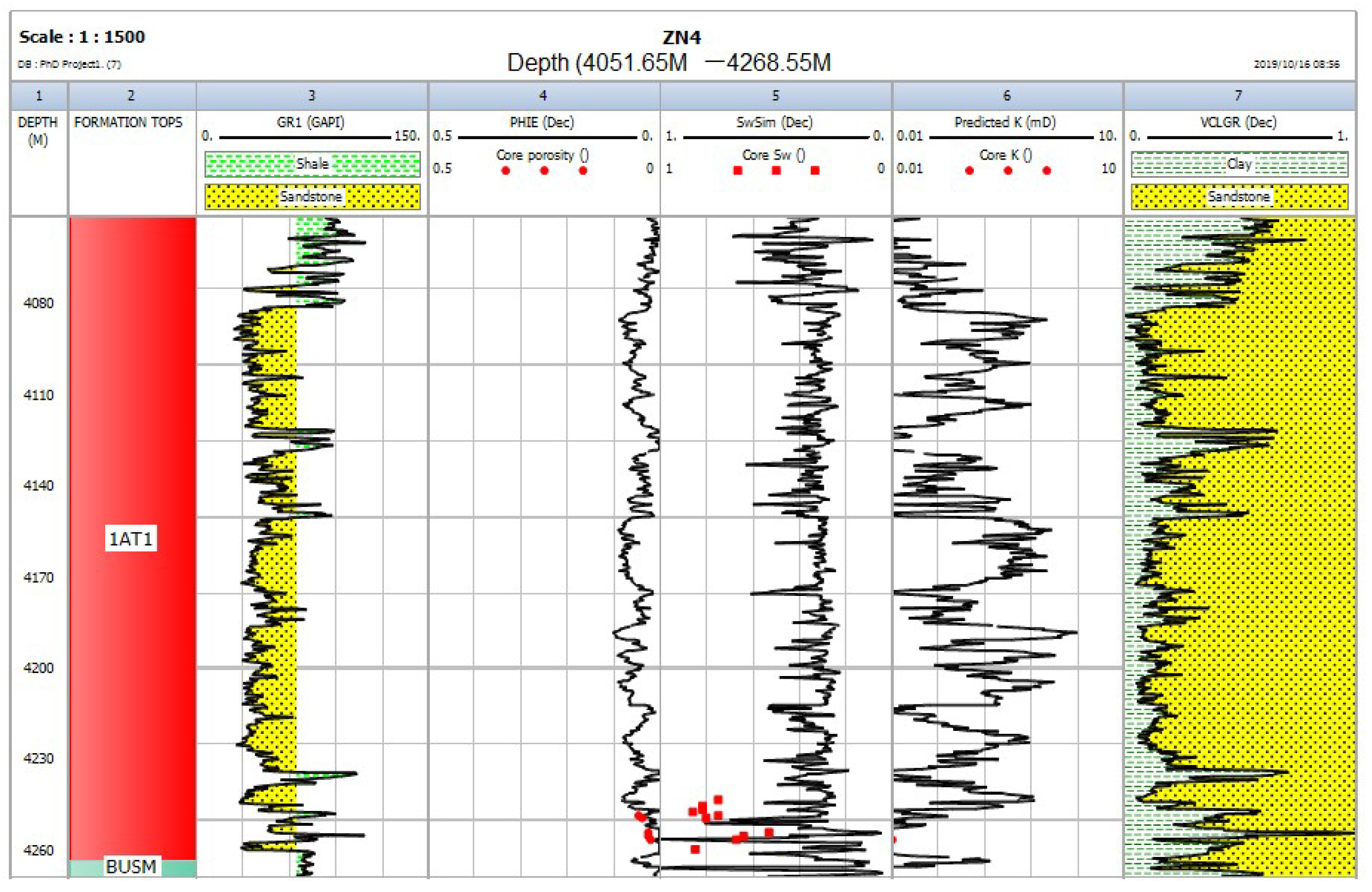
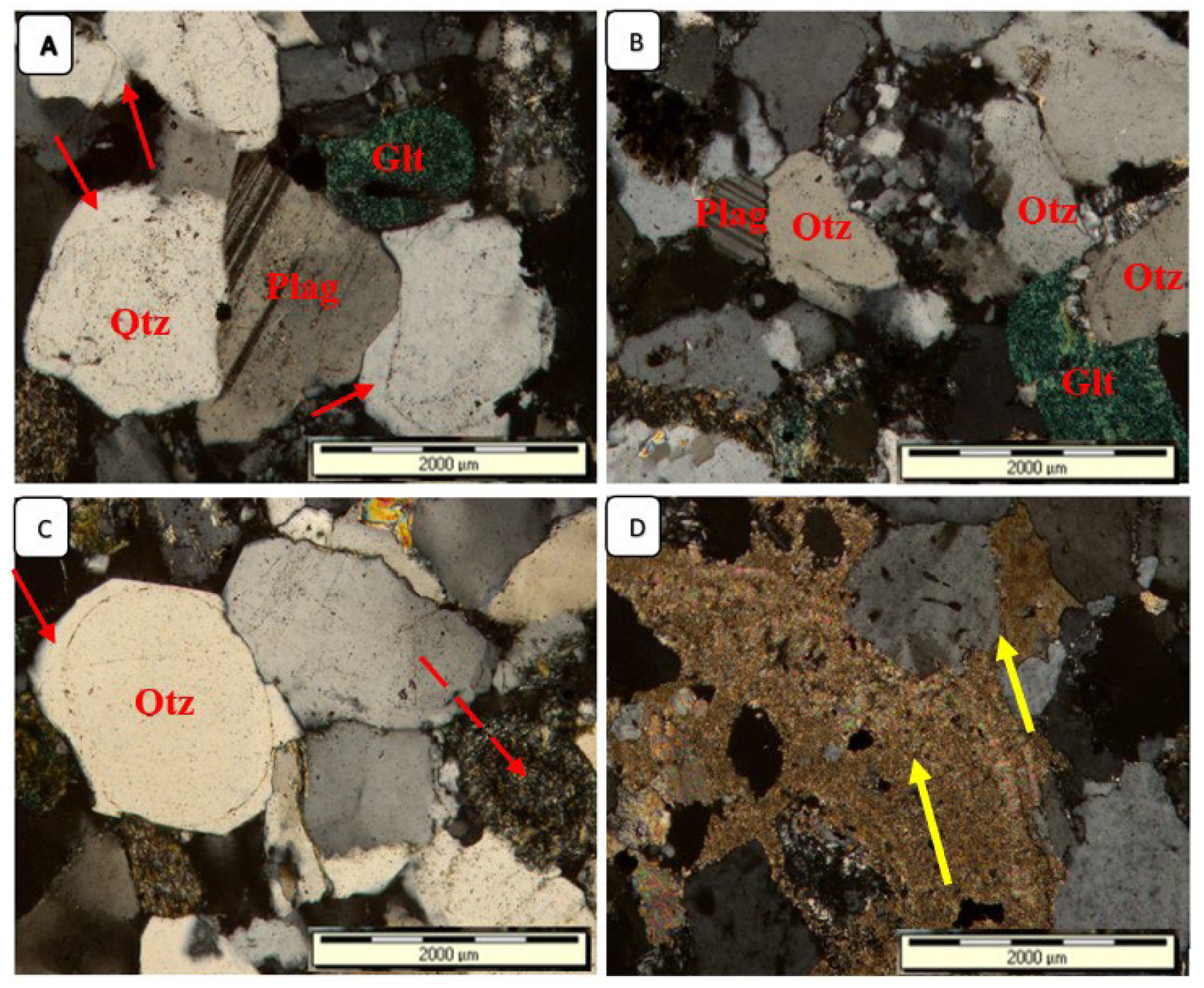
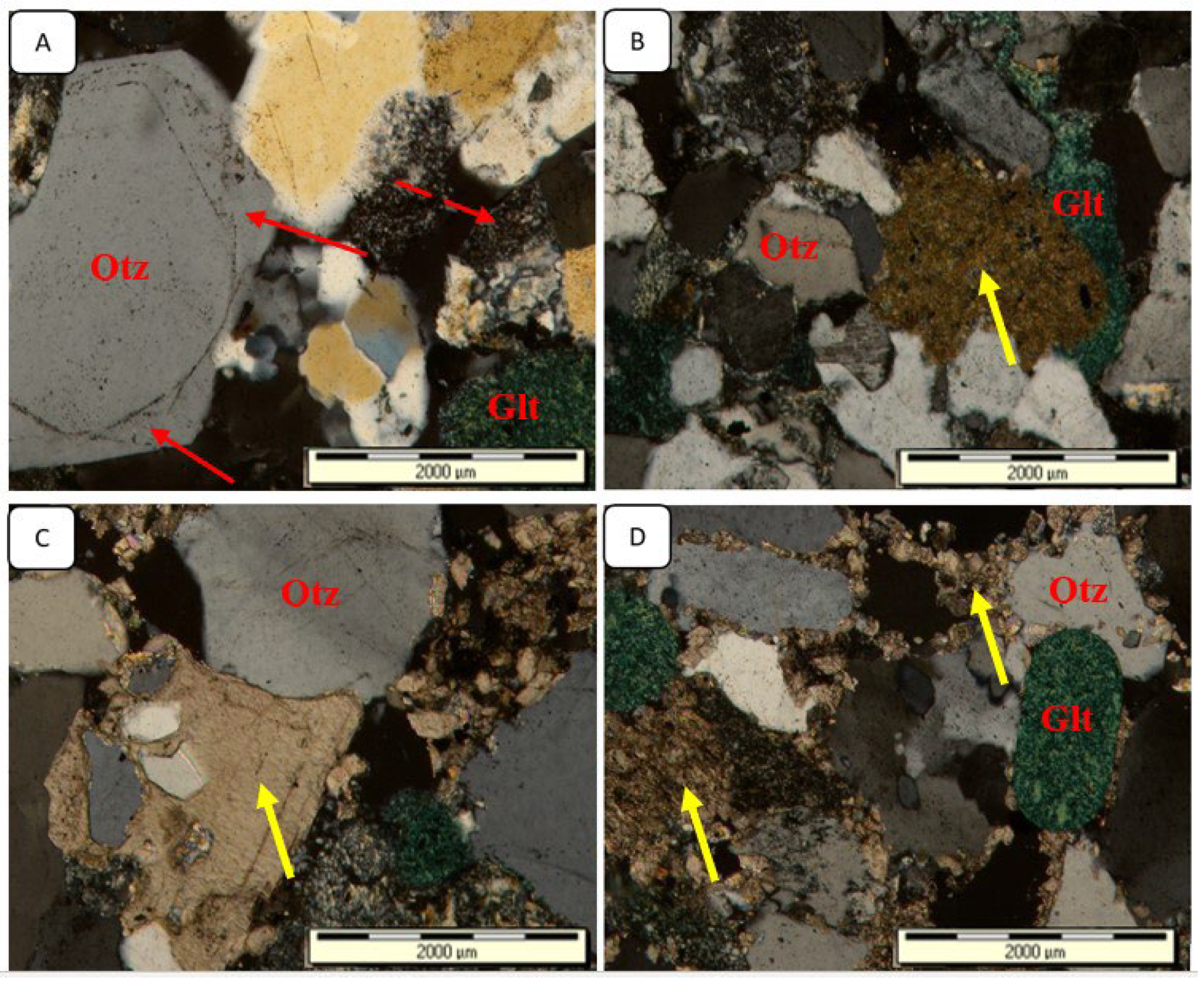
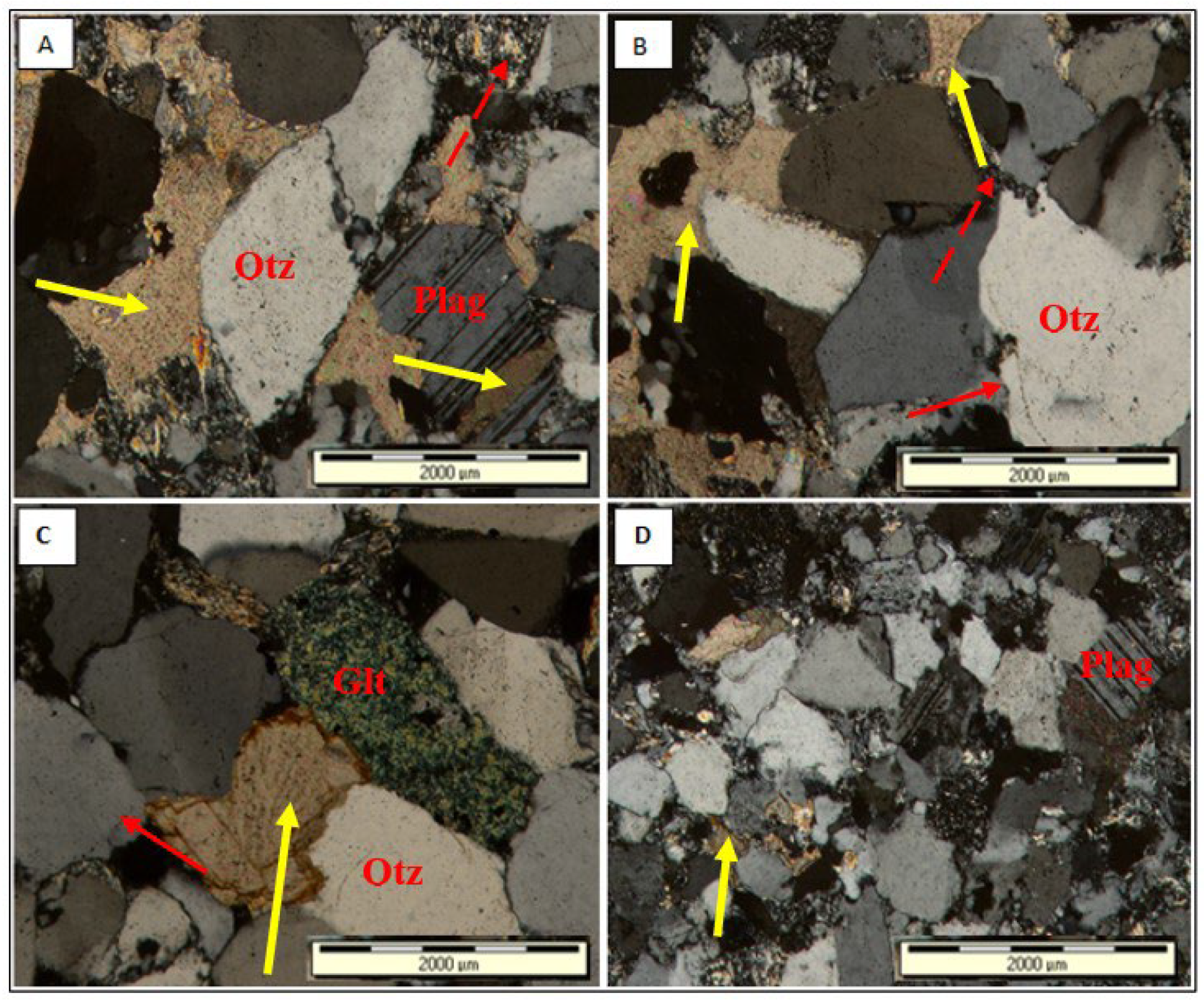
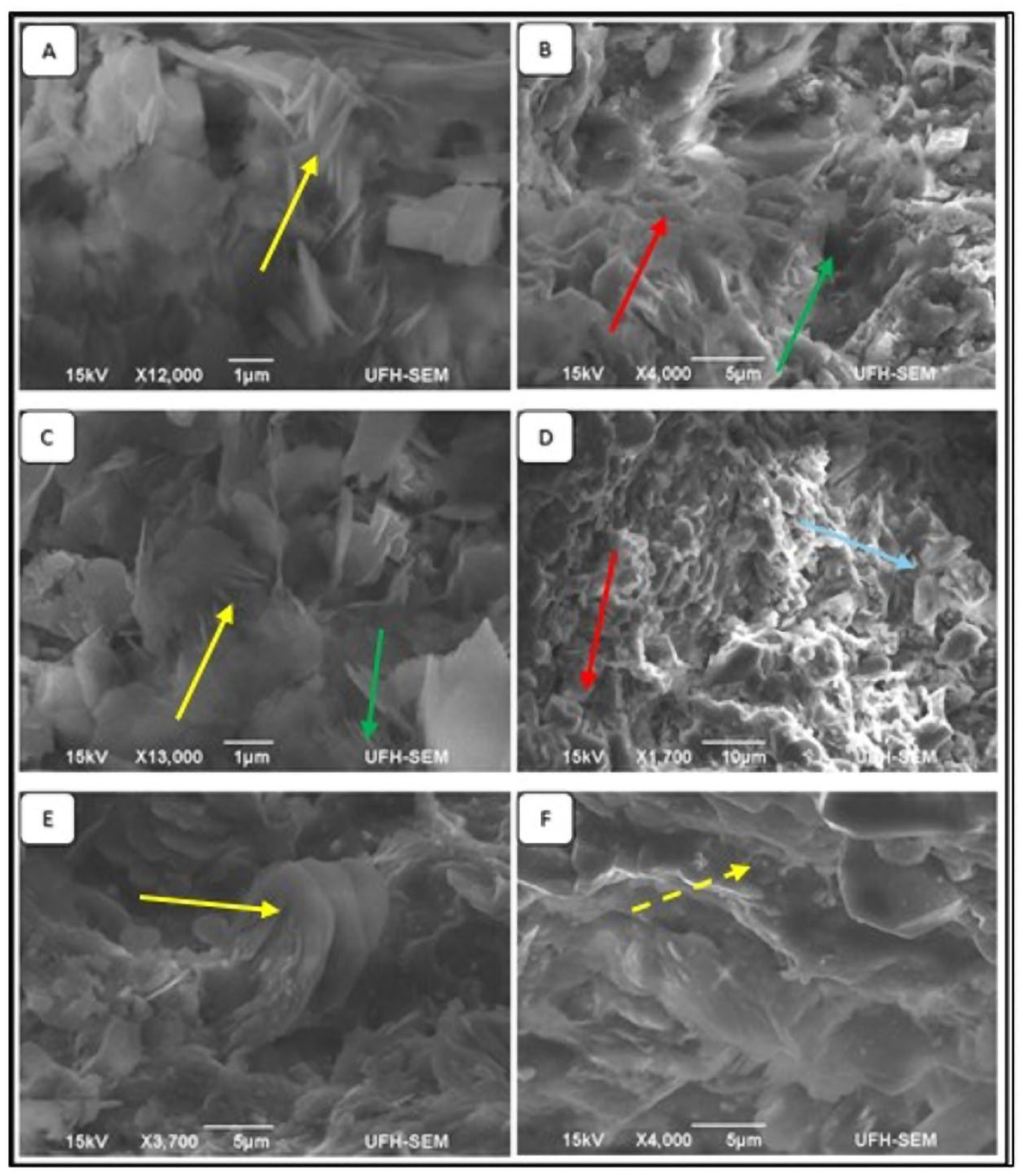

| Well Name | Reservoir Name | Top Depth (m) | Bottom Depth (m) | Gross Thickness (m) | Φ (%) | Sw (%) | Vcl (%) | K (mD) |
|---|---|---|---|---|---|---|---|---|
| ZN1 | 1AT1 | 3615.5 | 3685.1 | 69.9 | 10.8 | 25.5 | 23.3 | 0.096 |
| ZN3 | 1AT1 | 2610.3 | 2720.4 | 110.1 | 16.6 | 12.5 | 17.4 | 151.8 |
| ZN4 | 1AT1 | 4081 | 4246.7 | 165.7 | 8.7 | 30.4 | 8.6 | 0.093 |
Disclaimer/Publisher’s Note: The statements, opinions and data contained in all publications are solely those of the individual author(s) and contributor(s) and not of MDPI and/or the editor(s). MDPI and/or the editor(s) disclaim responsibility for any injury to people or property resulting from any ideas, methods, instructions or products referred to in the content. |
© 2024 by the authors. Licensee MDPI, Basel, Switzerland. This article is an open access article distributed under the terms and conditions of the Creative Commons Attribution (CC BY) license (https://creativecommons.org/licenses/by/4.0/).
Share and Cite
Magoba, M.; Opuwari, M.; Liu, K. The Effect of Diagenetic Minerals on the Petrophysical Properties of Sandstone Reservoir: A Case Study of the Upper Shallow Marine Sandstones in the Central Bredasdorp Basin, Offshore South Africa. Minerals 2024, 14, 396. https://doi.org/10.3390/min14040396
Magoba M, Opuwari M, Liu K. The Effect of Diagenetic Minerals on the Petrophysical Properties of Sandstone Reservoir: A Case Study of the Upper Shallow Marine Sandstones in the Central Bredasdorp Basin, Offshore South Africa. Minerals. 2024; 14(4):396. https://doi.org/10.3390/min14040396
Chicago/Turabian StyleMagoba, Moses, Mimonitu Opuwari, and Kuiwu Liu. 2024. "The Effect of Diagenetic Minerals on the Petrophysical Properties of Sandstone Reservoir: A Case Study of the Upper Shallow Marine Sandstones in the Central Bredasdorp Basin, Offshore South Africa" Minerals 14, no. 4: 396. https://doi.org/10.3390/min14040396





